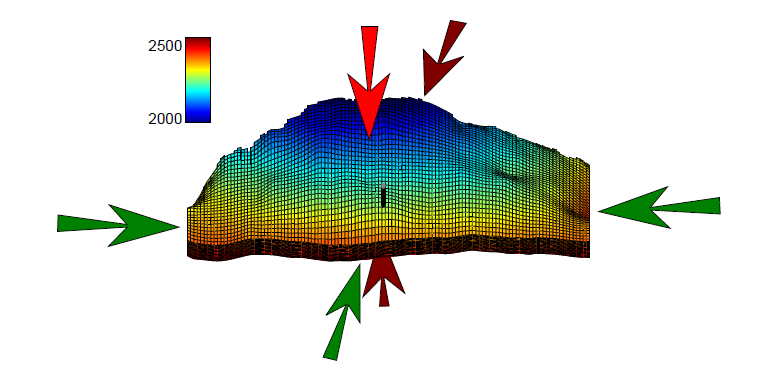Geological Storage of CO2: Sensitivity and Risk Analysis, 2014
Meisam Ashraf
Hovedinnhold
Advisors: Knut-Andreas Lie, Jan M. Nordbotten
Short description of project:
Geological CO2 storage has the potential to be a key technology for prevention of industrial CO2 emission into the atmosphere. A successful storage operation requires safe geological structures with large storage capacity. The practicality of the technology is challenged by various operational concerns, ranging from site selection to long-term monitoring of the injected CO2. The research in this report addresses the value of using sophisticated geological modeling to help in predicting storage performance.
In the first part, we investigate the significance of assessing the geological uncertainty and its consequences in site selection and the early stages of storage operations. This includes the injection period and the early migration time of the injected CO2 plume. The extensive set of realistic geological realizations used in the analysis makes the key part of this research. Heterogeneity is modelled using the most influential geological parameters in a shallow-marine system, including aggradation angle, levels of barriers in the system, faults, lobosity, and progradation direction.
A typical injection scenario is simulated over 160 realizations and major flow responses are defined to measure the success of the early stages of CO2 storage operations. These responses include the volume of trapped CO2 by capillarity, dynamics of the plume in the medium, pressure responses, and the risk of leakage through a failure in the sealing cap-rock. The impact of geological uncertainty on these responses is investigated by comparing all cases for their performance. The results show large variations in the responses due to changing geological parameters. Among the main influential parameters are aggradation angle, progradation direction, and faults in the medium.
A sophisticated geological uncertainty study requires a large number of detailed simulations that are time-consuming and computationally costly. The second part of the research introduces a workflow that employs an approximating response surface method called arbitrary polynomial chaos (aPC). The aPC is fast and sophisticated enough to be used practically in the process of sensitivity analysis and uncertainty and risk assessment. We demonstrate the workflow by combining the aPC with a global sensitivity analysis technique, the Sobol indices, which is a variance-based method proven to be practical for complicated physical problems. Probabilistic uncertainty analysis is performed by applying the Monte Carlo process using the aPC. The results show that the aPC can be used successfully in an extensive geological uncertainty study.
Link to thesis at BORA-UiB: http://bora.uib.no/handle/1956/7913
